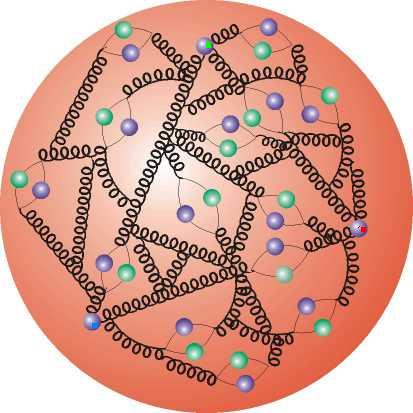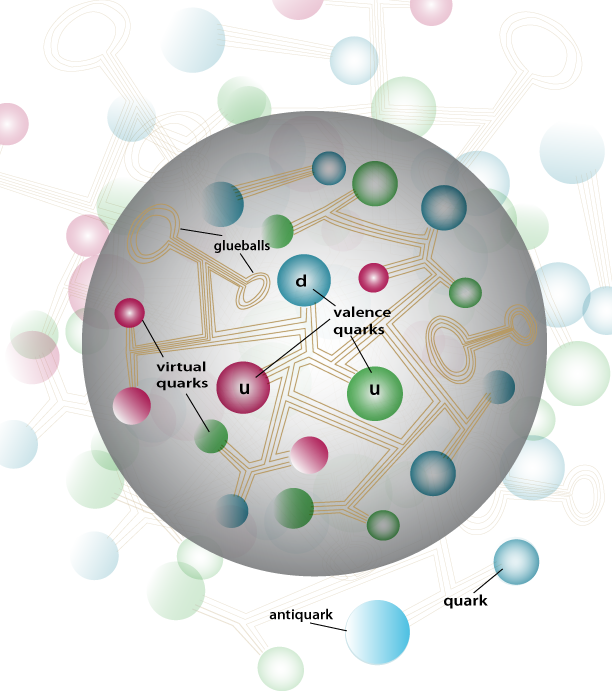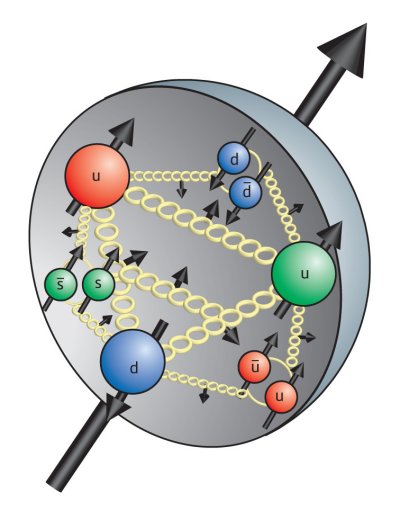 |
Since 1970, physicists have known that protons
consist of two up quarks and one down quark. [Neutrons are made of two downs and
an up.] But the mass of an up quark is 2 MeV, and the mass of a down quark is 4.8 MeV.
However, the mass of a proton is 938.3 MeV. What's going on???

Einstein was the first to point out that the full energy of an object is given by Mc2 + KE + PE. Thus for a proton in empty space, measuring mass in energy units as physicists always do, Mp = 2mu + md + E, where E is the internal energy of the proton, the total PE and KE of the bound system. Now, normally for bound systems the internal energy is less than zero. However, for the strong force, the internal energy can be anything, positive or negative. This means that 938.3 − 8.8 = 929.5 MeV, or 99% of the proton mass (and thus 99% of our mass!) is due to internal kinetic and potential energy. This energy exists in the form of massless bosons called gluons, the force bosons of the strong interaction, and in quark-antiquark pairs created by the gluons, which are “off-the-energy-shell” and effectively massless also. Matter is mainly potential and kinetic energy, not mass!

Same story for the neutron of course: two downs and an up. The neutron mass is about 939.5 MeV, while 2md + mu is 11.6 MeV, so again 99% of the mass of the neutron is due to internal energy.
